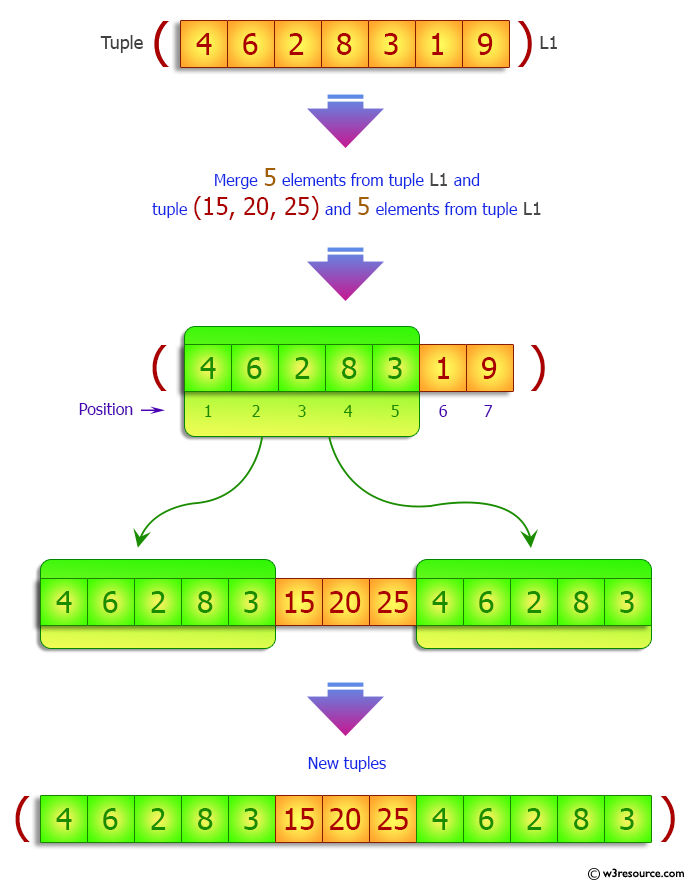

Pronunciation varies depending on whom you ask. The error tells us that we tried to unpack a smaller tuple into larger numbers of variables. Python provides another type that is an ordered collection of objects, called a tuple. Output: Traceback (most recent call last): File "", line 1, in ValueError: not enough values to unpack (expected 5, got 4) > director, scenarist, year, imdb_rating, stars = django_movie It says we tried to unpack a larger tuple into smaller numbers of variables. Tuple packing and unpacking solves the problem. Output: Traceback (most recent call last): File "", line 1, in ValueError: too many values to unpack (expected 3) Giving upper limit or lower limit way too high or low will return a tuple within the range of the maximum or minimum size. > director, year, imdb_rating = django_movie seq T start:stop Tuple slice seq has elements of tuple T on indexes start, start+1, start+2 ,stop-1. If the number of elements is either more or less, ValueError raises. Keep in mind that there must be the same number of variables equal to the length of the tuple. This operation is known as tuple packing: record 2, 'John', 'Doe', 'Sales' print(record) Wise versa, you can extract tuple values back into variables. A tuple can be created without using parentheses. Write a function called jointuplestring that takes a tuple as an argument and returns a string. defining tuple of one element a 1, alternative way a tuple(1) Packing and unpacking Python tuples. Of course, there are certain rules which have to be obeyed when using tuple unpacking. Initialize the list with tuples that contain strings. The operator is an unpacking operator that will unpack the values from any iterable object, such as lists, tuples, strings, etc For example, if we want to unpack numlist and pass in the 5 elements as separate arguments for the numsum function, we could do so as follows: numsum(numlist) 15. In fact, tuple unpacking has the same meaning with multiple assignment of a tuple in Python. > director, year, imdb_rating, stars = django_movieĪs you see, tuple unpacking is completely the opposite of tuple packing so that we assign each element of a tuple into multiple variables. Instead of doing so, there is a more Pythonic way to handle it: tuple unpacking. Let’s try to access elements of django_movie : > director = django_movie > year = django_movie > imdb_rating = django_movie > stars = django_movie We just assigned multiple variables, which are "Tarantino", 2012, 8.4 and "Waltz & DiCaprio", into a tuple, which is django_movie. You have already used tuple packing because it is as simple as: > django_movie = ("Tarantino", 2012, 8.4, "Waltz & DiCaprio") Tuples and Sequences Python 3.10.4 Documentation The following details are described here. This is called sequence unpacking or unpacked assignment. Tuple unpacking refers to assigning a tuple into multiple variables. In Python, elements of a tuple or list can be expanded and assigned to multiple variables.
Python tuple unpacking how to#
Hopefully this article has been useful for you to understand how to split a tuple into multiple variables using Python.Tuple packing refers to assigning multiple values into a tuple. The Overflow Blog On the quantum internet, data doesn’t stream it teleports (Ep.


We can use tuple unpacking to create new lists from lists of tuples in a similar way as we can create variables from tuples.īelow is an example of how to split a list of tuples into lists using Python. Browse other questions tagged python-3.x list iterable-unpacking or ask your own question. When working with lists of tuples, sometimes it can be useful to able to split the list of tuples into lists containing the values of each tuple element. x = 2Ģ Splitting a List of Tuples into Lists in Python We can swap values with tuple unpacking in the following way. One application of splitting a tuple is when you want to efficiently swap the value of two variables in Python. x, y, z = (0, 1, 2)Ģ Using Tuple Unpacking to Swap Values in Python To split a tuple, just list the variable names separated by commas on the left-hand side of an equals sign, and then a tuple on the right-hand side.īelow is an example of splitting a tuple into three variables in Python.

You can unpack tuples with variable names separated by commas. When working with tuples, it can be useful to be able to unpack the values of the tuples and create new variables. In Python, tuples are a collection of objects which are ordered and mutable. In Python, you can split tuples into multiple variables with tuple unpacking.


 0 kommentar(er)
0 kommentar(er)
